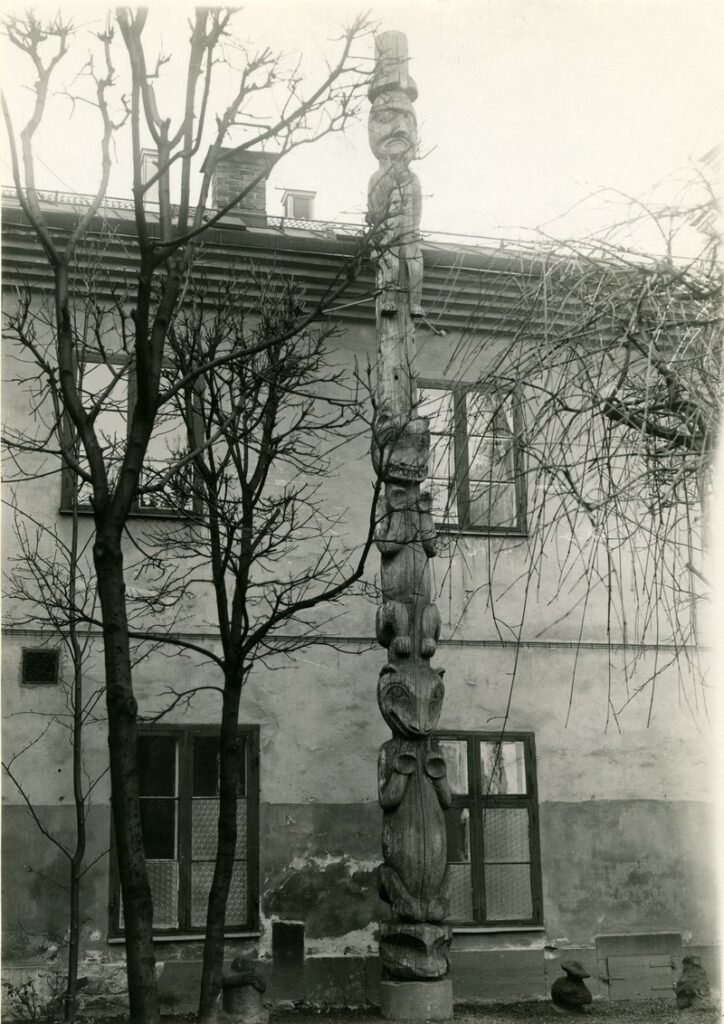The Haisla tribe has been living in the North Coast region of British Columbia for over 9,000 years. They were some of the last natives to interact with famous explorers who navigated the Western coast of North America.

The Northeast Indian tribes had been interacting with Europeans for over two centuries before the Haisla developed a relationship with the newcomers.
Today, the Haisla people are located in Kitamaat Village, otherwise known as Kitimat Village.
Home to about half of the 1700 Haisla, Kitamaat Village sits at the head of the Douglas Channel in British Columbia, while most of the balance of people live elsewhere in the Greater Vancouver region.
History
The population of the Haisla tribe declined after their first contact with Europeans. They became victim of the same problems that plagued all Native Americans, including the Northwest Indian Tribes, when it came to disease. Their populations were ravaged by smallpox and other diseases that were carried by the Europeans.
This drop in population caused the different clans to merge and occupy a common winter village. The tribes then began to work together and amass wealth for the potlatch (governing structure).
Soon, the entire Haisla tribe or nation began to occupy the same village.
The tribe would continue to see a decline in population and a loss of their culture.
Missionaries and government agents believed that certain aspects of traditional Indigenous culture would prevent the assimilation of Indigenous peoples to Euro-Canadian culture and should, therefore, be banned. They used their influence to force the abandonment of feasts and dancing. Additionally, traditional communal houses were pulled down, and the children were forbidden to speak the Haisla language.
In 1884, the Indian Act banned the potlatch; it was not reinstated until 1951. During the same period, the decline in population shattered the clans and lineages and disrupted orderly lines of succession to titles and property in the traditional social order. (Canadian Encyclopedia)
In 1918, the Haisla population decreased significantly due to the influenza epidemic. This would eliminate the Wolf and Frog clans.
Clan System
Unlike those of other Wakashan-speaking nations, the Haisla social system was based on the matrilineal clan. This principle was also followed by the Tsimshian nations, with whom the Haisla enjoyed close economic and social relations.
Historically, there were six clans within the Haisla people, each named after an animal that has historical significance to the tribe. It is believed that the sixth clan, the Crow, is nearly extinct and has merged with the Raven clan.
Each tribe has its own principle chief, and they would meet whenever needed to discuss issues that would affect the entire tribe.
These chiefs were very involved in the lives of their clan members, often arranging marriages that would be a benefit to the clan.
This could include things such as the distribution of wealth and building alliances between clans. These chiefs were able to take more than one wife, and wives of deceased chiefs could also be inherited by the new chief.
The Haisla people were some of the few northern North American indigenous nations that had a tiered class system consisting of noblemen, commoners, and slaves.
Nobleman had privileges that included participation in secret rituals, and they had the authority to direct commoners and slaves in labor activities. The nobility was recognized by their piercings, earlobes for the boys, and the lower lip for the girls.
Commoners were free to live as they would but were unable to participate in any tribal governance. Slaves were generally war prisoners and were expected to be completely subservient and could be killed at will.
Clan membership is inherited maternally, with titles and inheritance passing from uncle to nephew instead of the paternal father to son.
It is believed that this clan system was inherited from the migration of Tsimshian women as they spread throughout the northern tribes. Each clan has its own unique creation story in conjunction with the entire tribe’s creation story. (Wikipedia)
G'psgolox totem pole
The year was 1872, and the Haisla Nation, located in the north of what we now call British Columbia, was riddled with a smallpox epidemic that decimated the population, killing the vast majority of the inhabitants.
Chief G’psgolox, leader of the Eagle Clan of the Haisla tribe, watched in horror as his friends and all of his family died in terrible pain. One day, he went into the forest to ask for help and met with the spirits Tsooda and Zola.
The spirits told Chief G’psgolox to go to the edge of a mountain the next morning at dawn, where he would see his deceased people and learn to heal those still living. Chief G’psgolox complied and gained vital knowledge, learning the nature of the spirits, the Haisla spirit of continuance and transition.
As a thank you to the spirits for their help, Chief G’psgolox commissioned a nine-meter-tall totem pole with three figures. The bottom two figures commemorated the deceased, and on top represents the T’sooda spirit, and he is wearing a hat.
The pole, while commemorating the dead, told the tale of Haisla survival and comforted the Haisla as they returned to their summer grounds, once the site of so much sadness.
The G’psgolox Pole, as it later came to be known, stood tall and proud until 1929, when the Haisla returned to the site and found that the pole had vanished.
Little that they know, in 1928, Olof Hanson, the Swedish vice-president to British Columbia, submitted a request to the Canadian Department of Indian Affairs to acquire a pole, and in 1929, Olof was granted permission to cut down a totem pole and take it to Sweden.
Olof chose the G’psgolox Pole and cut it at the base while the Haisla were away due to seasonal living patterns. Olof donated the G’psgolox Pole to the Swedish National Museum of Ethnography that same year.
The museum had the pole in storage for many years until they had a proper building to display it.
After years of trying to figure out what happened to the pole, some members of the Haisla Nation heard rumors that the pole may have been up for display in Sweden. It was then that they decided to travel to Sweden to investigate the rumors. Once they confirmed that the pole on display was the G’psgolox Pole, the Haisla nation asked for its repatriation.
In 1992, a member of the Museum of Ethnography traveled to the Haisla village in British Columbia, where he was told by the Haisla people that the pole was stolen from them and that they had been avidly searching for it without success since the theft in 1929 and that now that is found it had to be returned to its rightful owners.
The Haisla people offer to carve identical totem replicas in exchange for the original. The museum agreed to the proposal by the Haisla people, and in 1994, the Swedish government granted permission to the museum to gift the totem pole to the Haisla people with the condition that the replica has to be an exact match to the original.
In the year 2000, the Haisla community completed two replicas of the pole. One was destined for Sweden, while the other was to be placed where once the G’psgolox Pole stood tall.
The Haisla nation also built a historical preservation center in the Kitimaat Village that would host the pole once it arrived from the museum.
Finally, in 2006, after 77 years at the museum and over one hundred years since its disappearance from Misk’usa village, the pole finally arrived at the Kitimaat Village in British Columbia, its final destination.

Conclusion
The Haisla Tribe continues to exist in Canada and is one of the oldest tribes still in existence in North America. Their resilience to overcome and survive multiple pandemics should be noted; however, due to their lack of population, they do not have much influence politically.
The tribes's lack of development compared to the Europeans, Canadians, and Americans caused them to be easily overrun and lose much of their land.
The Canadian government recognizes their status as a First Nation, and the Haisla continue to survive as an independent people, albeit subject to Canadian rule.
